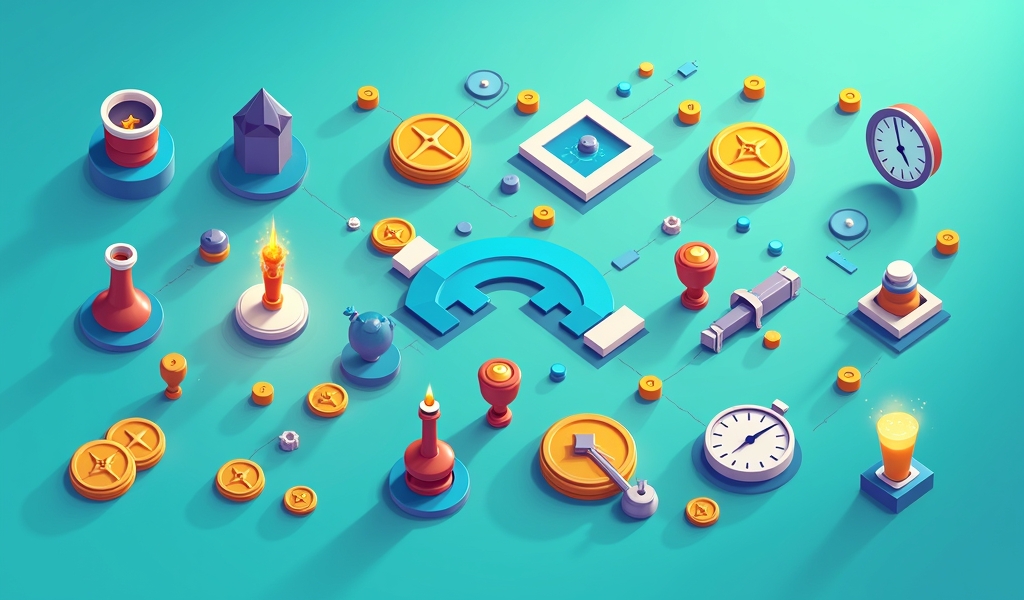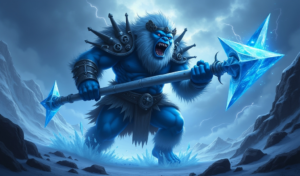Overview
Mastering key tactics to improve laning phase in League of Legends creates early advantages that often snowball into mid-game dominance and victory. The comprehensive guide covers seven essential strategies including wave management, vision control, effective trading, jungler synergy, champion matchup understanding, and mental fortitude—all fundamental elements that high-elo players consistently use to establish lane dominance.
Table of Contents
Want to improve laning phase in League of Legends? You’re not alone. The early game often determines who snowballs to victory, and mastering this crucial period can significantly boost your win rate. Whether you’re struggling to maintain CS under pressure or finding yourself repeatedly pushed under tower, these proven tactics will transform your early game from passive to dominant.
The laning phase is where champions are built or broken – it’s where you establish the foundation for mid and late-game success. In this guide, we’ll break down seven battle-tested strategies that high-elo players consistently use to dominate their lanes, create advantages, and carry games.
Let’s dive into the tactics that will help you improve laning phase performance and climb the ranked ladder more consistently.
What is the Laning Phase and Why is it Important?
The laning phase typically refers to the first 10-15 minutes of a League of Legends match when players are primarily focused on their designated lanes. During this critical period, you’re aiming to secure gold through minion kills (CS), gain experience, and potentially score kills on your lane opponent.
Why is it so important to improve laning phase skills? Simply put, early advantages compound. A lead in levels, items, or map pressure during laning phase often snowballs into mid-game dominance. Beginner League players frequently underestimate how decisive these early minutes can be.
Strong laning accomplishes several key objectives:
- Establishes gold and experience leads
- Creates pressure that draws enemy jungler attention
- Opens opportunities for objective control
- Builds momentum and confidence for your team
- Sets up favorable item timing for key power spikes
To dominate this phase, you’ll need a strategic approach that goes beyond simply trying to land skillshots. Let’s explore our first game-changing tactic.

Master Wave Management to Control the Lane
Wave management is perhaps the most underappreciated skill that can dramatically improve laning phase results. At its core, wave management is about controlling where minions meet and how quickly they die, which determines where you and your opponent must position.
Three fundamental wave states you should master are:
- Freezing – Maintaining minions just outside your tower range, forcing opponents to overextend
- Slow pushing – Gradually building a large wave that crashes into the enemy tower
- Fast pushing – Quickly clearing waves to reset or roam
To freeze effectively, only last-hit minions and maintain a small enemy minion advantage (3-4 minions). This creates a situation where your opponent must risk ganks to get CS or lose gold and experience.
For Bronze to Silver players, even basic wave management can create massive advantages. When you’re ahead, freeze to deny resources. When behind, use slow pushes to safely farm and avoid risky situations.
Proper wave management also enables better recall timing. Push waves fully into the enemy tower before backing to minimize CS loss. This simple habit that high-ranked League players practice consistently can add up to hundreds of gold advantage over the course of a game.
Vision Control: Your Secret Weapon
Vision control is crucial if you want to improve laning phase performance. Many players underestimate the power of strategic warding, treating it as an afterthought rather than a core tactical advantage. When you know where the enemy jungler is, you can play aggressively with confidence.
Effective vision control during laning involves:
- Placing wards at jungle entrances near your lane
- Using control wards in river bushes or tribrush
- Timing ward placements before jungler gank windows (around 2:45-3:15 for first ganks)
- Tracking when enemy wards expire
For Silver to Gold players, developing a warding routine can dramatically reduce deaths to ganks. Set a mental timer to check your ward inventory and map state every minute.
Remember, vision isn’t just for safety – it enables aggression too. Confirming the enemy jungler’s position on the opposite side of the map gives you a green light to trade aggressively or even dive your opponent. Top laners especially benefit from this knowledge due to their isolated position.
Vision score correlates strongly with win rate across all elos. Even basic warding strategies can give you an edge over opponents who neglect this aspect of the game.
Trading Effectively to Establish Dominance
Trading – the exchange of damage with your lane opponent – is where you can truly showcase your mechanical skill and game knowledge to improve laning phase outcomes. Effective trading isn’t about constantly attacking your opponent; it’s about finding advantageous moments to deal damage while minimizing return damage.
The key principles of effective trading include:
- Trading when the enemy is locked in last-hitting animation
- Utilizing your champion’s power spikes (level 2, 3, 6)
- Understanding ability cooldowns – both yours and your opponent’s
- Respecting minion aggro, which can significantly impact early trades
- Tracking resource management (mana/energy)
Mid lane players especially need to master these concepts since the short lane makes trading frequent and consequential. When you successfully out-trade your opponent, you create pressure that translates to CS leads, denied experience, or even kills.
One advanced trading concept is “trading stance” – positioning yourself so that when your opponent moves to last hit a minion, you can attack them and move away before they can effectively respond. This simple positioning technique can dramatically improve laning phase pressure, especially for ranged champions.
Remember that successful trading isn’t just about dealing damage – it’s about creating a health advantage that translates into lane control. Even forcing your opponent to use potions early can create windows where you have a resource advantage.

Working With Your Jungler for Lane Advantage
Synergy with your jungler can be the difference between a stagnant lane and complete domination. Unfortunately, many players fail to consider how their lane actions impact jungle pathing, leading to missed opportunities and frustrated teammates.
To improve laning phase through jungler coordination:
- Track buff timings to anticipate your jungler’s movements (first buff spawns at 1:30)
- Maintain priority in lane before objective spawns (dragon, scuttle)
- Communicate summoner spell cooldowns through pings
- Set up waves to facilitate successful ganks
- Respond quickly to jungle invades and skirmishes
ADC players should coordinate with their support to ensure proper setup for jungle ganks, as bot lane 3v2 dives can quickly snowball into early dragon control. Understanding when your jungler is likely to be nearby allows you to bait engagements or position more aggressively.
Even simple communication like pinging your lane state can dramatically increase gank success rates. If you’re pushing, a simple “enemy has no flash” ping can signal a dive opportunity. If you’re being pushed in, a “need assistance” ping helps your jungler prioritize lanes.
According to professional jungling guides, successful ganks are often the result of lane setup rather than jungler skill alone. By learning to manipulate waves for ganks, you’ll make your jungler’s job easier and improve your team’s overall early game success.
Understanding Champion Matchups
Matchup knowledge is the foundation upon which all other laning strategies are built. To truly improve laning phase results, you must understand the specific dynamics between your champion and your opponent’s. This knowledge isn’t just about knowing who “counters” whom, but understanding exactly why and how power dynamics shift throughout the laning phase.
Key matchup factors to consider include:
- Range advantages and disadvantages
- Power spike timings (levels and items)
- Trading patterns and windows of opportunity
- Resource management differences (mana vs manaless)
- Waveclear capabilities
For lower elo players, focusing on mastering a small champion pool is more effective than trying to counter-pick. When you thoroughly understand your champion’s capabilities, you can identify and exploit the specific mistakes your opponents make in that matchup.
Many players make the mistake of playing passively in difficult matchups rather than identifying specific windows of opportunity. Even in countered situations, most champions have moments of power you can leverage – whether it’s a level spike, ability cooldown, or resource advantage.
Consider keeping matchup notes for your main champions, recording specific observations after games. What worked? What didn’t? When were you strongest or weakest relative to your opponent? This systematic approach to learning matchups will accelerate your improvement over time.
The Mental Game: Staying Focused and Adaptable
The psychological aspect of laning is often overlooked, yet it’s crucial if you want to consistently improve laning phase performance. Maintaining focus, adapting to changing circumstances, and managing frustration can be just as important as mechanical skill or game knowledge.
Mental game tips for laning excellence:
- Set concrete goals for each laning phase beyond just “winning”
- Practice mindful CS tracking (aim for specific benchmarks)
- Resist the temptation to take bad trades after missing CS
- Recognize when to surrender lane priority for team objectives
- Adapt your playstyle based on jungle pressure
Perhaps most importantly, understand that not every lane is winnable. Experienced League coaches often emphasize that knowing how to “lose gracefully” is a critical skill. Sometimes, going 0/0/0 with a 15 CS deficit is actually a win in a difficult matchup.
Tilt – the emotional state where frustration leads to increasingly poor decisions – is the enemy of consistent laning. Develop reset routines between games, and even between deaths, to maintain focus. Something as simple as a deep breath and a mental checklist can prevent one mistake from snowballing into many.
Remember that adaptability is a skill. If your initial strategy isn’t working, be willing to adjust rather than stubbornly repeating the same approach. As noted by professional League psychology experts, flexibility often separates climbing players from those who plateau.
Conclusion
Mastering these seven tactics to improve laning phase performance won’t happen overnight, but implementing them consistently will yield dramatic results over time. Wave management, vision control, effective trading, jungler synergy, matchup knowledge, and mental fortitude form the foundation of early game dominance.
Remember that laning is both an art and a science. While there are principles to follow, the application requires practice, adaptation, and development of your own personal style. The best players aren’t just mechanically gifted – they’re strategic thinkers who understand how to create and press advantages from the earliest moments of the game.
Start by focusing on one aspect at a time. Perhaps this week you’ll work on wave management, and next week on trading stance. Building these skills incrementally will prevent overwhelm and allow you to properly integrate each concept into your gameplay.
With dedication to these proven tactics, you’ll improve laning phase results across all roles and champions, creating the early game advantages that lead to more consistent victories. Good luck on the Rift!
Frequently Asked Questions
How can I improve my CS during laning phase?
Focus on last-hitting only when minions are at their lowest health, and practice in the Practice Tool for 10 minutes daily to build muscle memory. Use abilities strategically to secure cannon minions and maintain a consistent rhythm of back timings to minimize CS loss.
How do I deal with constant jungle pressure during laning phase?
Invest in defensive vision, play closer to your tower when your wards are down, and track the enemy jungler through map awareness. Sometimes accepting a CS deficit is better than dying repeatedly, so focus on soaking experience and scaling safely until pressure shifts elsewhere.
What’s the best way to improve laning phase as a support?
Focus on maintaining vision control, creating pressure through positioning, and coordinating with your ADC on trading windows. Support laning is less about personal mechanics and more about enabling your carry while denying the enemy, so prioritize protection and setup rather than direct aggression.
How do I know when to roam during laning phase?
The best roaming opportunities come after pushing a wave fully into the enemy tower, especially if you have priority and your ultimate ability available. Always consider what you might lose (CS, tower plates, experience) against what you might gain (kills, objective control, map pressure) before leaving lane.
How can I improve laning phase against ranged champions as a melee?
Concede CS when necessary to maintain health, utilize bushes to break line of sight, and wait for level 3-6 power spikes before engaging. Taking Doran’s Shield and Second Wind rune can significantly reduce poke damage, allowing you to sustain through the early levels until you can fight back effectively.




